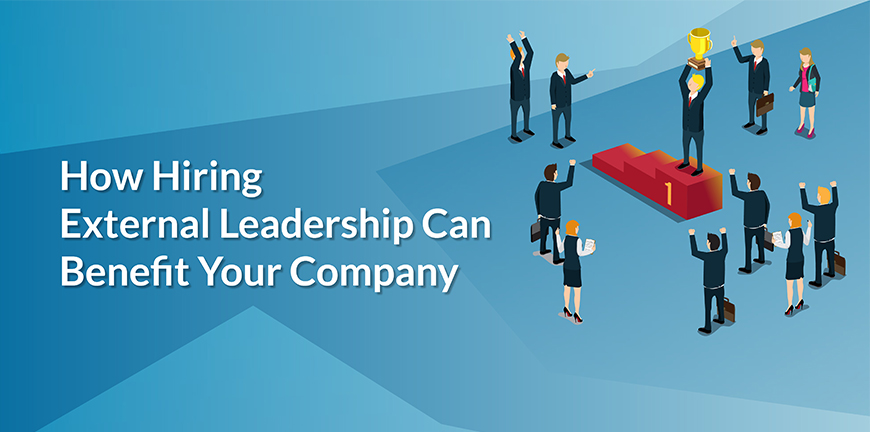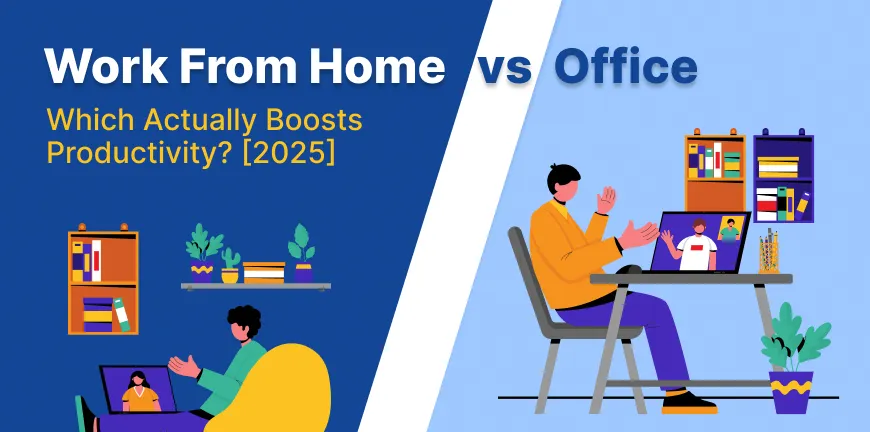
Top 8 Hiring Trends in the IT Industry
30/01/2023
How Hiring External Leadership Talent Can Benefit Your Company?
17/02/2023In the post-pandemic world, how we work and the future workplace has changed dramatically. Organizations worldwide have been forced to adapt to socio-economic shifts. Two words, “Remote work”, have taken over workforce solutions (Digital). The trend gained traction globally, evolving the employment landscape in 2022, and has continued to grow in popularity.
With the start of yet another year, the hovering recession has added yet another concern to be accounted for. As an employer, it is our responsibility to foster a work environment that resonates with the likes and interests of employees as well as provide them with opportunities and prepare them ahead of time, to adapt to these changes.
With workforce trends evolving and signaling the constantly changing needs of organizations, the need to keep up with the industry’s competitiveness and adapt to the new trends has become all the more important.
5 Key Trends Shaping Workplaces in 2025
1. Managing a Distributed Workforce
Making remote work normal and engaging in a flexible workforce environment has never been more valued than it is right now. Feeling tethered to their desks at the workplace for more than eight hours a day is not seen as favorable by employees anymore. Modern employees love the newfound freedom and flexibility that comes with remote working.
The adoption of robust time management, communication software, and employee productivity software tools points to the growing prominence of remote work. Many employees have stated that fewer commutes and flexible work hours have improved their work-life balance.
The successful results of remote work have pushed many organizations to take the hybrid approach, allowing employees the freedom to work remotely and in-office as and when it is deemed necessary or favorable depending on their need to collaborate, have face-to-face discussions or meet their teams at work.
Although the remote approach has produced successful outcomes, there are certain implications that organizations have to face. With the wide adoption of hybrid work, employers are having to put in efforts to measure employee productivity when working remotely.
From tracking hours to monitoring software, employers are trying to gain insight into how teams spend their time. But at the same time, employers need to work collaboratively and be transparent with their teams to maintain a sense of trust and avoid negative impacts.
2. Greater use of AI and Automation
Advances in artificial intelligence are evolving at an astonishing speed, from language generation to image creation and beyond. Rather than taking away jobs, sentient robots, have started to create and enable evolving careers.
AI and data analytics have created immense opportunities in the tech world and have come a long way in helping industries with their scalability. By automating tasks and minimizing errors, AI has been a boon, taking away repetitive tasks and allowing employees to focus on problem-solving, creative tasks.
Integrating AI- Advanced analytics, machine learning, and Big Data management into a team that is already talented and skilled has further empowered them to achieve superior results. AI has enabled the hiring potential up to 10x times, in the recruitment industry. By choosing the right technologies to facilitate chatbots, candidate screening, video conferencing, and remote screening, recruiters have dominated the workspace. While AI may be speeding up the recruitment process, certain implications have emphasized the need to secure data due to its transparency.
3. Employee Engagement & Mental Well-Being Priority
Surprisingly, employees feeling “enough is enough”, has sent the labor market into a frenzy, and organizations have been forced to take a hard look at their employees’ well-being quotient. An interesting fact is that a common “perk” or “we’ll offer you as much as refreshments you want” does not seem to be the answer anymore.
Initiatives and strategies focused on employees’ mental well-being are being employed across businesses that deliver meaningful and practical help to their employees — from self-care days off once a month to increased well-being benefits, mental health first aid training, and even adaptations to the workplace.
With an increase in remote and distributed workforces, achieving desired employee satisfaction and engagement becomes a challenge. Employing AI and new human resources technology to provide augmented experiences has become necessary to achieve this. A Forbes article observed that highly engaged teams showed 21% more profitability.
Many ways have proven to support employee wellness and engagement – some of them are real-time communication tools, and blockchain security solutions ensuring employees’ confidential personal information is safe and protected.
4. Skill Focus: Upskilling & Reskilling to Retain Top Talent
To fill critical roles in 2023, organizations will need to become more comfortable assessing candidates solely on their ability to perform in the role, not their credentials and prior experience. It’s more urgent than ever to rethink outdated assumptions about qualifications. Upskilling opportunities for the workforce will become a prominent retention strategy, driving an employee’s growth and development.
While all this is well and good, it is important to remember that managing and working with a distributed workforce requires more complex communication processes and remote work technologies. The adoption of AI and new technologies has created a need for upskilling. But this is good! Training and upskilling nurture top talent and help maintain high-performance teams as well as help retain top talent in fundamental roles.
The abundance of skill shortages in the current market has created a challenge for employers to find and retain talent. With the present circumstances, it seems like a viable option to hire job seekers and employees to develop and learn new skills, as a solution for employers to remain competitive in the market. Interestingly, soft skills are seen as extremely valuable in an organization, to increase the value of the workforce, and rightly so, because you can always teach employees the required skills but you can’t teach them the attitude.
5. Diverse, Equitable & Inclusive Workforce
The growing diversity seems quite evident in recent times. Whether it’s different genders, age groups, races, or other factors, organizations need to realize the importance of diversity and leverage the multifaceted workforce it represents. This is an era where there’s potential for a wide range of generations to work under the same roof and office environment. While there may be a management concern as to how the different age groups will gel together, there is a big plus side to the ones looking for a career change, a potential insecurity has been, thanks to the multigenerational workforce.
Previously, the purpose of implementing DEI was to promote diversity and belonging by providing support to groups of workers based on just one element of their identity. It is only recently that employers have become aware of the fact that real transformation lies in acknowledgment, valuing, and leveraging the experiences and expertise of their workforce.
According to a Glassdoor report, three-quarters of employees and job seekers say a diverse workforce is a vital element when deciding their workplace as they care greatly about diversity and equity.
Final Thoughts on Future Workplace
This is just a snapshot of some of the major features of the new workplace landscape that we’re going to see emerging in 2023 and beyond.
The state of the modern workplace is continually changing, and it’s necessary to keep up and adapt to these changes. Employers that harness these existing and emerging trends in creative ways, will be able to assemble the workforces efficiently in their companies to meet business objectives. HR leaders who listen to employees and respond with empathy and creativity will be able to attract and retain the right talent while reshaping the future of work.




